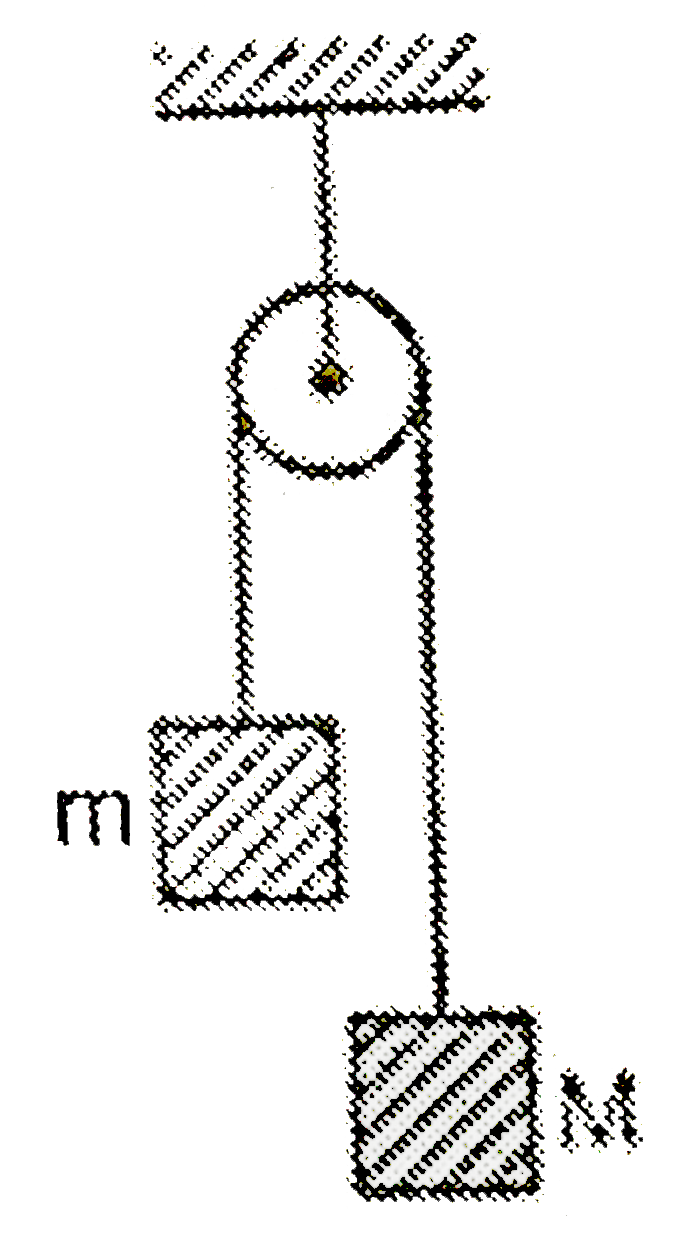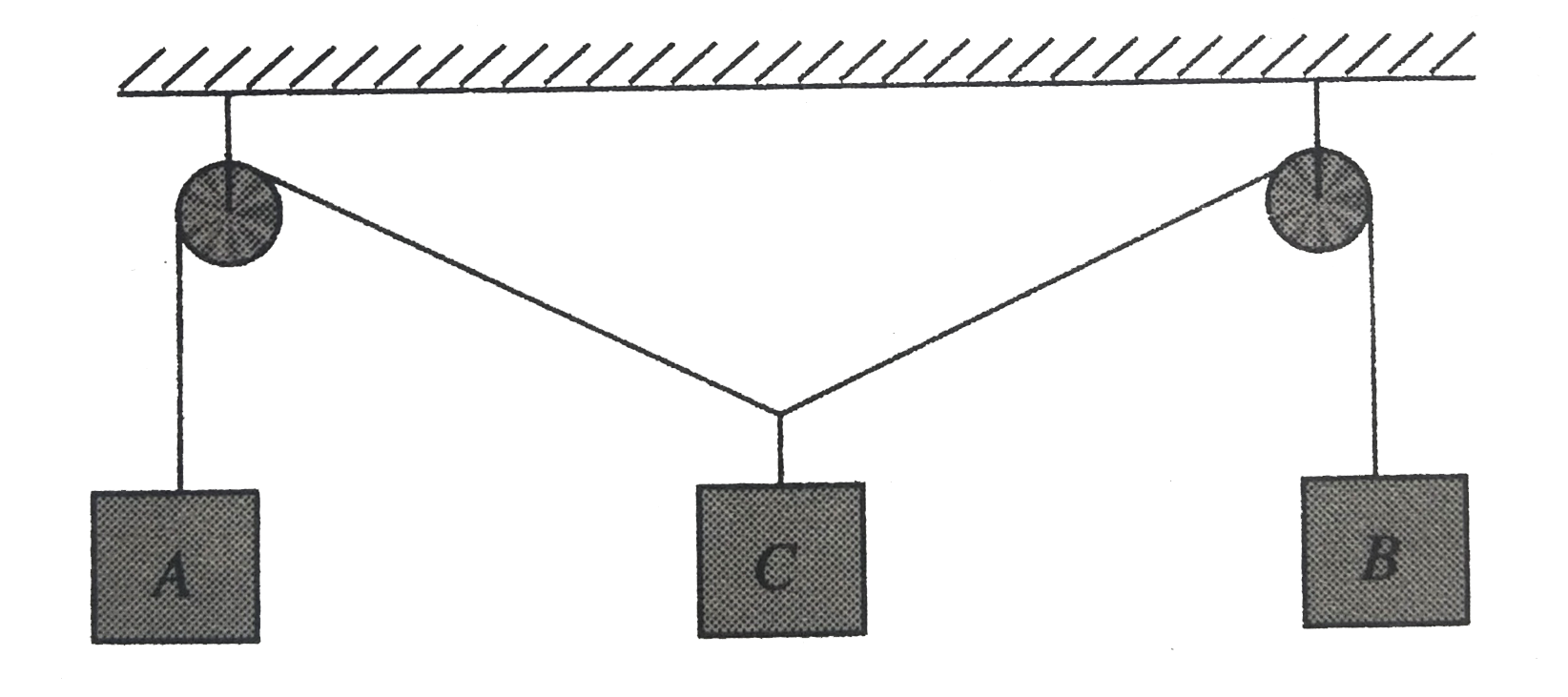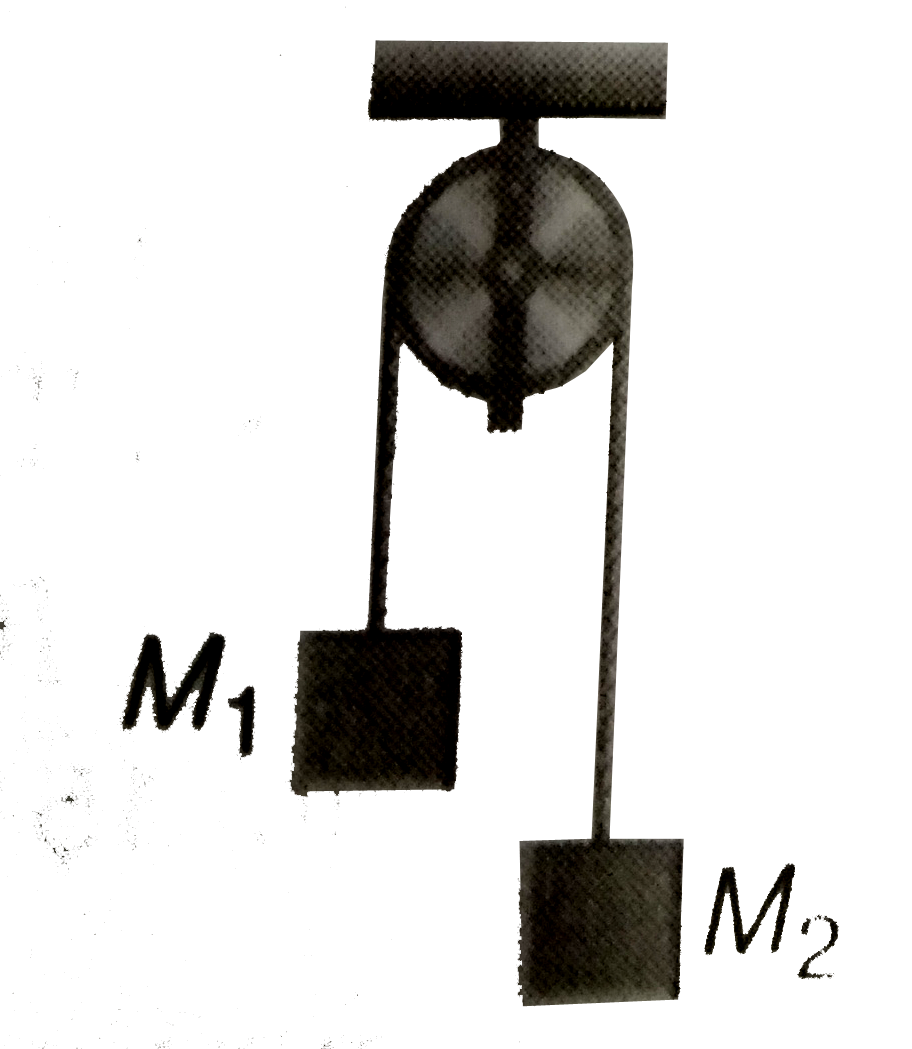Three loads of mass and M are suspended on a string passed through two pulleys as shown in Fig. The pulleys are at the same distance from the points of suspension. Find the ratio of masses of the loads at which the system is in equilibrium. Can these conditions always be realized? The friction should be neglected.

Step by step video & image solution for Three loads of mass m_(1),m_(2) and M are suspended on a string passed through two pulleys as shown in Fig. The pulleys are at the same distance from the points of suspension. Find the ratio of masses of the loads at which the system is in equilibrium. Can these conditions always be realized? The friction should be neglected. by Physics experts to help you in doubts & scoring excellent marks in Class 12 exams.
Updated on:21/07/2023Topper's Solved these Questions
Similar Questions
A block of mass M1 and a block of mass M2 are connected by a string that passes over a pulley as shown in Fig. The pulley is a uniform disk of radius R and mass M. Find the acceleration of the two object, using the concepts of angular momentum and torque.

View SolutionThree masses m1,m2andm3 are attached to a string -pulley system as shown . All the three masses are held at rest and then released If m3 remains at rest , then

View Solution
Knowledge Check
Two masses m and M are attached to the strings as shown in the figure. If the system is in equilibrium, then
 Atanθ=1+2MmBtanθ=1+2mMCcotθ=1+2MmDcotθ=1+2mM
Atanθ=1+2MmBtanθ=1+2mMCcotθ=1+2MmDcotθ=1+2mMTwo masses m and M(m<M) are joined by a light string passing over a smooth and light pulley (as shown)
 Athe acceleration of each mass is (M−mM+m)gBthe tension in the string connecting masses is (2MmM+m)gCthe thrust acting on the pulley is (4MmM+m)gDNone of the above
Athe acceleration of each mass is (M−mM+m)gBthe tension in the string connecting masses is (2MmM+m)gCthe thrust acting on the pulley is (4MmM+m)gDNone of the aboveIn the figure shown all pulleys are ideal and small. The central pulleys is 2 m away from both ends. What is the length (in m) of the string ? The system is in equilibrium
 A8√3B4√4[1+2√5]C4√3[1+2√3]D2√3+4
A8√3B4√4[1+2√5]C4√3[1+2√3]D2√3+4
Two masses m1 and m2 are attached with light strings as shown. If the system is in equilibrium, find the value of θ

View SolutionBlocks of mass M1 and M2 are connected by a cord which passes over the pulleys P1 and P2 as shown in the figure. If there is no friction, the acceleration of the block of mass M2 will be

View SolutionTwo masses M and m(M>m) are joined by a light string passing over a smooth light pulley.

View SolutionThree blocks A,B, and C are suspended as shown in fig. Mass of each of blocks A and B is m. If the system is in equilibrium, and mass of C is M then

View SolutionTwo masses M1=5kg,M2=10kg are connected at the ends of an inextensible string passing over a frictionless pulley as shown. When masses are released, then acceleration of masses will be

View Solution

